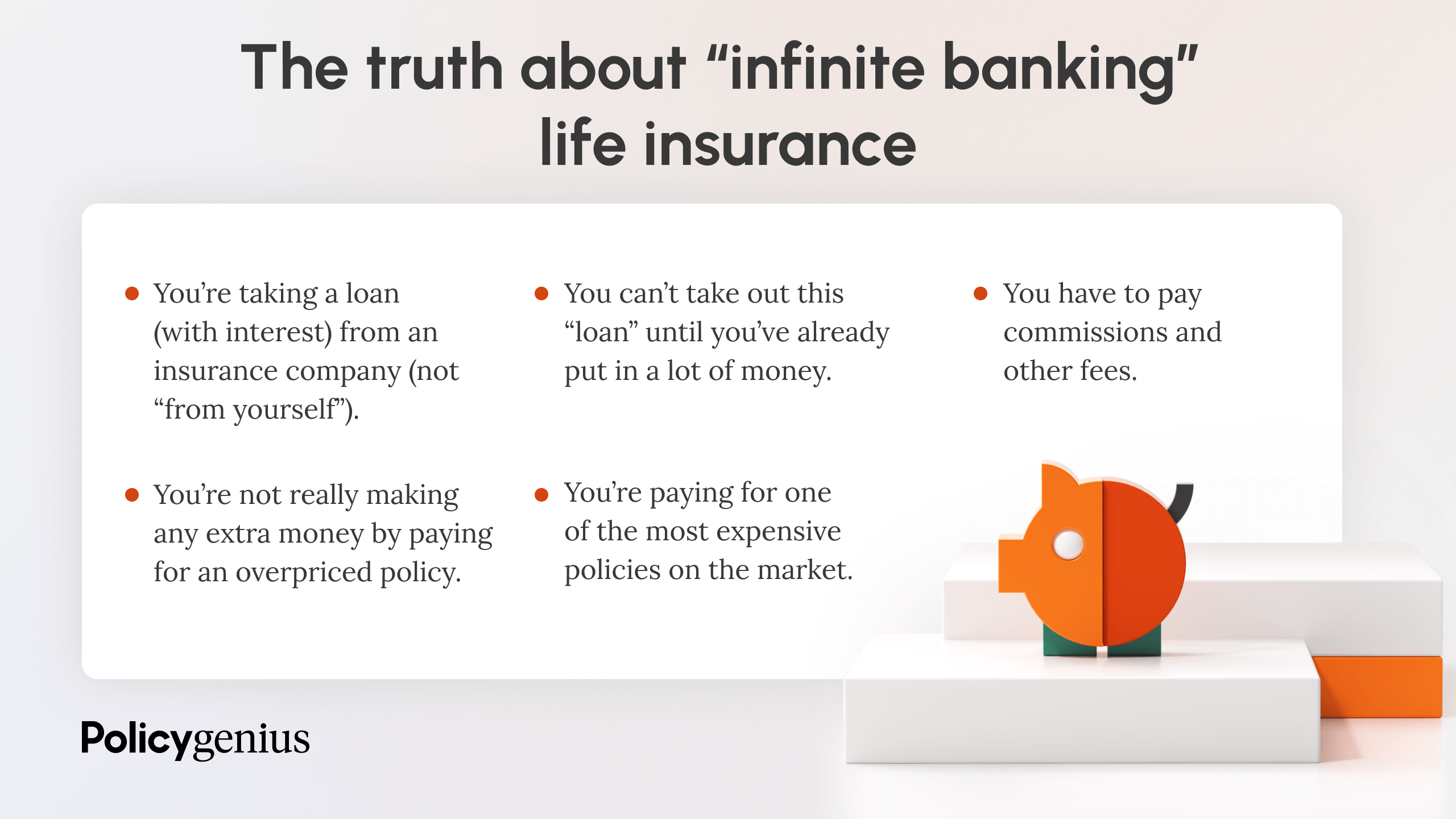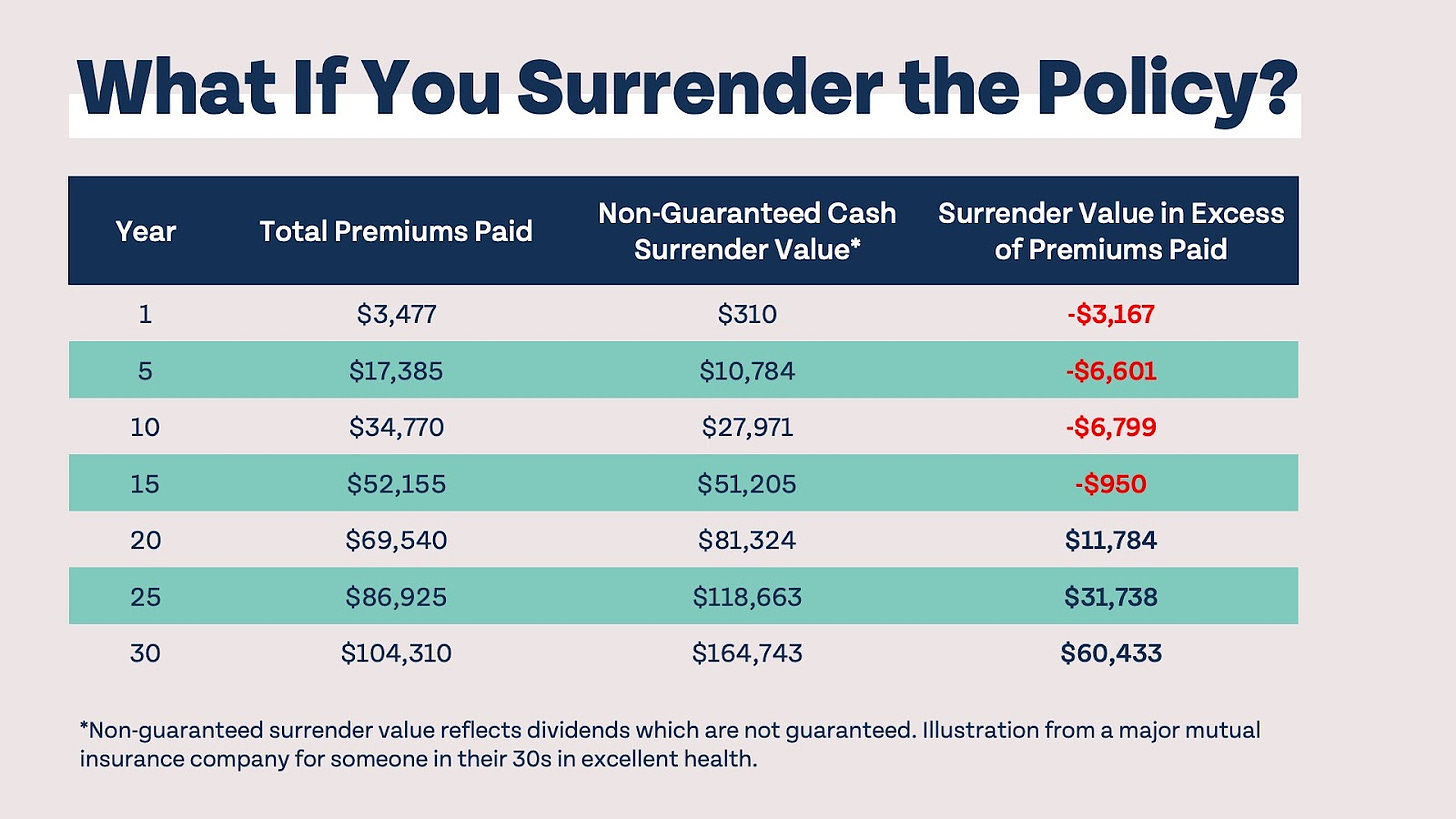All Categories
Featured
Table of Contents
Okay, to be fair you're really "financial with an insurance policy business" rather than "banking on yourself", yet that principle is not as very easy to market. It's a little bit like the concept of purchasing a home with cash, then obtaining versus the house and placing the money to function in one more financial investment.
Some individuals like to speak about the "rate of money", which basically means the exact same thing. In truth, you are just optimizing leverage, which works, but, of course, works both means. Frankly, all of these terms are rip-offs, as you will see below. That does not suggest there is nothing worthwhile to this idea once you obtain past the advertising.
The whole life insurance policy market is afflicted by overly pricey insurance, massive commissions, unethical sales techniques, reduced prices of return, and badly enlightened clients and salespeople. If you want to "Financial institution on Yourself", you're going to have to wade right into this industry and in fact buy entire life insurance. There is no replacement.
The guarantees intrinsic in this item are essential to its feature. You can borrow against many kinds of money worth life insurance policy, yet you should not "bank" with them. As you purchase a whole life insurance plan to "bank" with, remember that this is an entirely different section of your financial plan from the life insurance area.
Buy a big fat term life insurance policy policy to do that. As you will certainly see below, your "Infinite Financial" plan actually is not going to reliably supply this vital financial feature. One more problem with the reality that IB/BOY/LEAP depends, at its core, on an entire life policy is that it can make acquiring a policy problematic for numerous of those interested in doing so.
Infinite Banking Concept Youtube
Hazardous leisure activities such as SCUBA diving, rock climbing, skydiving, or flying likewise do not blend well with life insurance coverage items. The IB/BOY/LEAP supporters (salespeople?) have a workaround for youbuy the plan on someone else! That may function out fine, because the factor of the plan is not the survivor benefit, but bear in mind that buying a plan on minor children is a lot more costly than it ought to be since they are normally underwritten at a "basic" rate instead of a preferred one.

A lot of policies are structured to do either points. Many typically, policies are structured to make best use of the commission to the agent offering it. Cynical? Yes. It's the truth. The compensation on an entire life insurance policy plan is 50-110% of the first year's premium. In some cases plans are structured to optimize the fatality benefit for the premiums paid.
The rate of return on the policy is really essential. One of the ideal methods to optimize that element is to obtain as much cash as feasible into the plan.
The most effective means to boost the price of return of a policy is to have a fairly tiny "base policy", and afterwards put more money right into it with "paid-up enhancements". Rather of asking "Just how little can I place in to get a particular fatality advantage?" the question ends up being "How a lot can I lawfully put right into the plan?" With more cash money in the plan, there is more cash worth left after the costs of the survivor benefit are paid.
A fringe benefit of a paid-up addition over a regular premium is that the compensation price is lower (like 3-4% rather than 50-110%) on paid-up enhancements than the base plan. The less you pay in commission, the greater your rate of return. The price of return on your money value is still mosting likely to be unfavorable for some time, like all money worth insurance plan.
But it is not interest-free. In reality, it may cost as high as 8%. The majority of insurer only offer "direct acknowledgment" fundings. With a direct recognition funding, if you obtain out $50K, the dividend rate related to the money value yearly just relates to the $150K left in the plan.
Infinite Banking Toolkit
With a non-direct acknowledgment loan, the company still pays the very same reward, whether you have actually "borrowed the money out" (technically against) the plan or not. Crazy? Who knows?
The companies do not have a resource of magic complimentary money, so what they provide in one area in the plan should be drawn from an additional location. However if it is drawn from an attribute you care less about and place into a feature you care a lot more about, that is an advantage for you.
There is another crucial feature, generally called "wash financings". While it is wonderful to still have dividends paid on money you have secured of the plan, you still have to pay rate of interest on that particular car loan. If the dividend price is 4% and the loan is charging 8%, you're not specifically coming out in advance.
With a clean funding, your financing rates of interest is the same as the reward rate on the plan. While you are paying 5% rate of interest on the financing, that passion is completely countered by the 5% dividend on the financing. So in that respect, it acts simply like you withdrew the cash from a checking account.

5%-5% = 0%-0%. Without all 3 of these factors, this policy just is not going to function very well for IB/BOY/LEAP. Almost all of them stand to profit from you getting into this principle.
Actually, there are many insurance coverage agents discussing IB/BOY/LEAP as a function of entire life who are not really marketing policies with the necessary functions to do it! The issue is that those that know the concept best have a substantial dispute of rate of interest and usually inflate the advantages of the concept (and the underlying plan).
Infinite Banking System
You should compare borrowing against your plan to withdrawing money from your financial savings account. No money in money value life insurance policy. You can place the money in the financial institution, you can invest it, or you can buy an IB/BOY/LEAP policy.
It grows as the account pays rate of interest. You pay tax obligations on the interest yearly. When it comes time to buy the boat, you withdraw the cash and acquire the watercraft. After that you can conserve some even more cash and put it back in the financial account to begin to earn interest once more.
It expands over the years with capital gains, dividends, rental fees, etc. Several of that income is tired as you go along. When it comes time to acquire the boat, you market the financial investment and pay taxes on your long-term funding gains. You can conserve some more money and purchase some even more financial investments.
The money worth not utilized to spend for insurance and commissions expands over the years at the reward price without tax drag. It begins with adverse returns, however hopefully by year 5 or two has actually recovered cost and is expanding at the returns price. When you go to acquire the watercraft, you obtain against the policy tax-free.
Borderlands 2 Infinite Bank Space Glitch
As you pay it back, the cash you repaid begins expanding again at the dividend price. Those all work quite similarly and you can compare the after-tax rates of return. The 4th choice, nonetheless, functions really in different ways. You do not conserve any kind of money neither get any kind of investment for several years.
They run your credit report and give you a financing. You pay interest on the obtained money to the financial institution till the funding is paid off.
Latest Posts
Be Your Own Bank
How To Start Infinite Banking
Infinity Banca